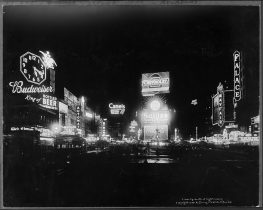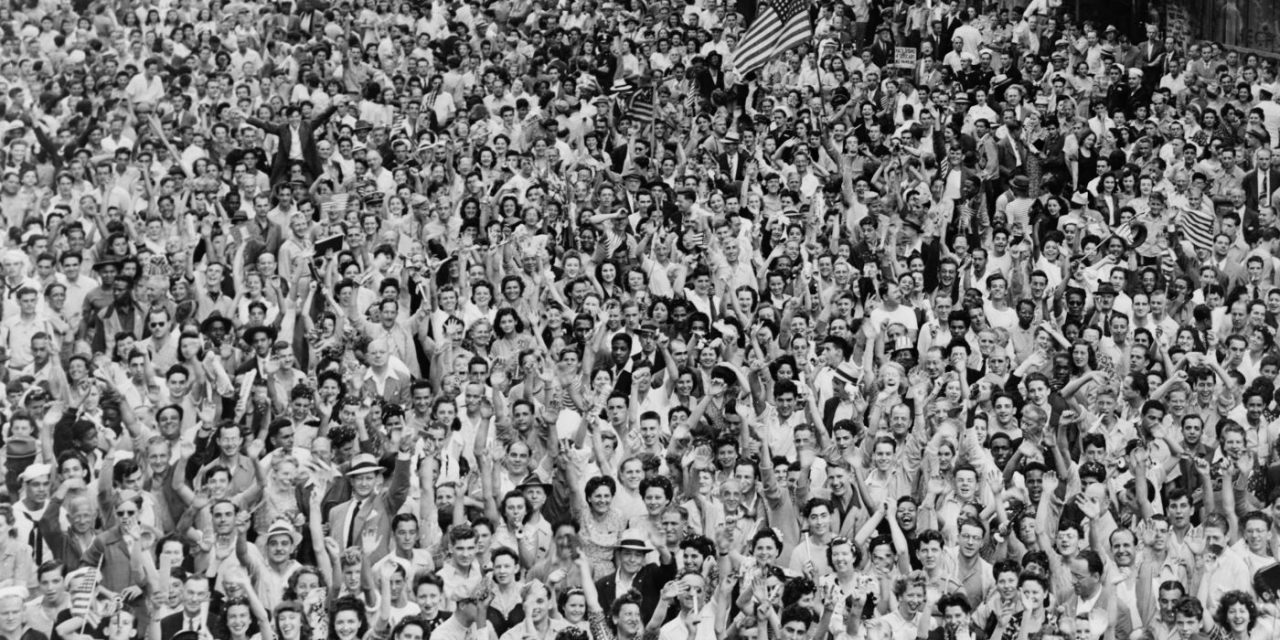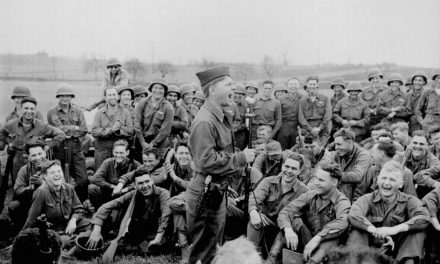As the nation rang in the New Year last night, the anxiety of war loomed over the typically festive occasion. Americans packed churches in quiet reflection, government employees gave up their days off, and major cities saw an enormous police presence.
Officers patrolled areas where large groups of people were gathered to celebrate the start of 1942, such as Times Square in New York and F Street in the District of Columbia.
The police detail in Times Square was the largest ever assigned to the vicinity. More than 2,000 officers were assigned to the area as a safety measure on New Year’s Eve, compared to 1940’s patrol of just under 1,500 officers.
“You can’t close Time Square unless you close every theater, movie, hotel and night club,” New York City Police Commissioner Lewis Valentine said. “There’s no justification for that.”
Valentine said he decided to permit the festivities in spite of the danger of an air raid. He ordered the emergency services spotted on site in the event of an air attack. There were no air raids during last night’s celebrations.
Washington, D.C. police officers reported a lesser use of horns at midnight, a likely result of Director of the Office of Civil Defense Fiorello La Guardia’s request. “We can have just as much fun without blowing the horns,” La Guardia said.
He sent the request for minimal use of sirens or horns last night to prevent the possibility of serious disorder. The concern stemmed from the thought that the horns might be mistaken for the air-raid siren.

Times Square on a quiet night.
Even with the precautions in place, a majority of the clubs, hotels and restaurants remained open. Theaters on Broadway have sold out their shows for the week.
The spike in business started as soon as the announcement that the Times Square festivities would be permitted. Although there were fire trucks, ambulances and patrol cars at hand (among other reminders of the war), more than 500,000 people gathered in Times Square to watch the ball drop at midnight.
Precautions were taken across the board, with officers stationed at every streetlight and fire alarm box in Times Square. Due to the recent update of a manual shut-off feature, the officers stationed were placed to ensure street lights were not extinguished by an unauthorized individual.
Along with the additional police presence, evacuations signs were installed that directed the safest and fastest route out of Times Square. “In case of alarm, leave Times Square,” the signs read. “Do not run.”
Washington, D.C. did not see the same turnout as New York City. Government employees returned to work today at the unprecedented request of bureau orders. As a result, approximately 100,000 employees offered their holiday to the war effort.
Another request came from President Franklin D. Roosevelt, who had asked the nation to spend New Year’s Day in prayer. Churches held midnight services, including the first night watch at the Washington National Cathedral in its 35-year history.
Archbishop Samuel Stritch lead the prayer service at Holy Name Cathedral in Chicago, Ill. “Fervently we shall pray that God will make us calm in triumph … without hatred and greed in our hearts,” he said.
Sources:
“Air raid guest set for New Year Eve.” (1941, Dec 28). New York Times.
“Mayor asks quiet to greet New Year.” (1941, Dec 31). New York Times.
“Restaurants: They are going to have brisk New Year’s Eve after all.” (1941, Dec 31).
Gilbert, Ben. “War casts deep shadow on new year parties here.” (1942, Jan 01). The Washington Post.
“Gay throngs greet ’42 in Times Square undaunted by war.” (1942, Jan 01). New York Times.
“Capital leads observance of day of prayer.” (1942, Jan 01). The Washington Evening Star.
“New Year revelry downs war gloom; Times Square jammed.” (1941, Jan 01). New York Times.





